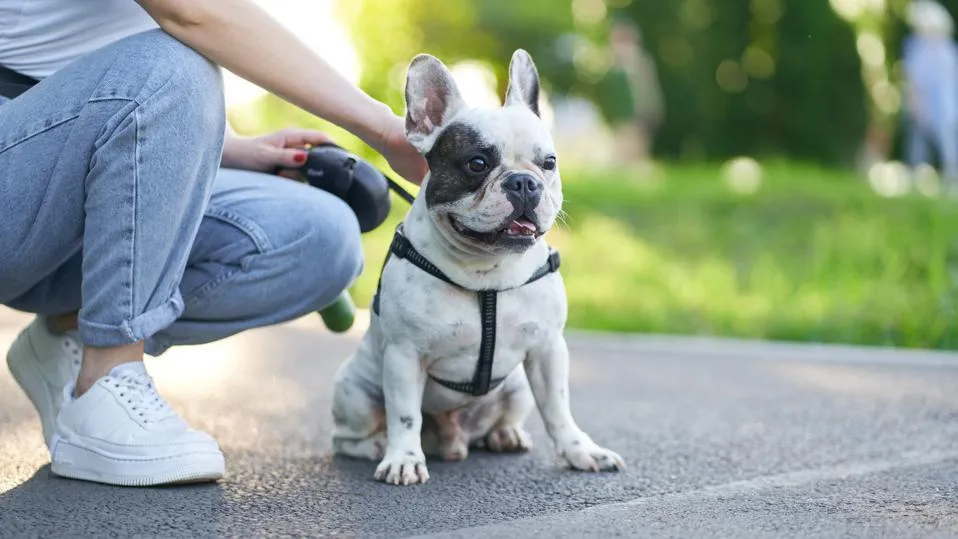The Norwegian Elkhound, a breed steeped in Norse history and legend, is a remarkable canine companion that has stood the test of time.
With their striking silver-gray coat and regal bearing, these dogs have captivated hearts for centuries.
But what makes this ancient breed so special, and why might they be the perfect addition to your family?
Let’s embark on a journey to explore the fascinating world of the Norwegian Elkhound!
A Glimpse into the Past: The Viking’s Trusted Ally
The Norwegian Elkhound’s history is as rich and rugged as the Scandinavian landscapes they hail from.
These dogs have been an integral part of Norse culture for over a thousand years, earning their place in both art and legend.
As a proud owner of two Elkhounds, I can attest to their unwavering loyalty and strength – traits that undoubtedly made them invaluable companions to the Vikings.

Ancient Origins and Modern Relevance
Did you know that the Norwegian Elkhound is considered one of Europe’s oldest dog breeds?
Archaeological evidence suggests their existence dates back to 5000 BCE! These hardy dogs were prized for their hunting prowess, particularly in tracking large game like moose (or “elk” in British English).
Today, while they may not be sailing longships or hunting elk, Norwegian Elkhounds continue to enchant dog lovers worldwide with their:
- Striking appearance
- Loyal nature
- Playful disposition
- Adaptability to various lifestyles
The Unmistakable Look: Regal and Robust
One glance at a Norwegian Elkhound, and you’ll understand why they’ve been described as “dignified but friendly.”
Their distinctive appearance sets them apart from other spitz-type breeds.
Coat and Colors
The hallmark of the Norwegian Elkhound is its thick, luxurious double coat.
The outer layer is coarse and weather-resistant, while the undercoat is soft and insulating. This combination allows them to withstand harsh Nordic winters with ease.
The typical color pattern includes:
- A predominant silver-gray hue
- Black tips on the outer coat, creating a shaded effect
- Lighter silver or cream coloring on the chest, belly, and legs
- A darker “saddle” marking on the back
Physical Characteristics
Norwegian Elkhounds are medium-sized dogs with a sturdy, well-balanced build. Here are some key physical traits:
- Height: 19-20 inches (48-52 cm) for males, slightly smaller for females
- Weight: 48-55 pounds (22-25 kg) for males, 40-48 pounds (18-22 kg) for females
- Erect, pointed ears
- Curled tail carried over the back
- Dark brown, almond-shaped eyes with an alert expression

Temperament: The Heart of a Viking, the Soul of a Companion
Norwegian Elkhounds are known for their bold and energetic personalities, tempered with a gentle and affectionate nature.
As someone who’s shared my home with these wonderful dogs, I can vouch for their unique blend of characteristics.
Loyal and Protective
Like their Viking ancestors, Norwegian Elkhounds form strong bonds with their families.
They’re naturally protective, making them excellent watchdogs without being overly aggressive.
My first Elkhound, Thor, once alerted us to a potential intruder in our backyard – turns out it was just a particularly bold squirrel, but his vigilance was impressive nonetheless!
Intelligent and Independent
These dogs are quick learners but can also be stubborn at times.
Their independent nature, honed by centuries of working alongside humans rather than under constant command, means they can sometimes have a mind of their own.
Patience and consistent training are key to bringing out the best in your Elkhound.
Playful and Energetic
Despite their regal appearance, Norwegian Elkhounds have a fun-loving side.
They enjoy playtime and require regular exercise to stay happy and healthy.
A bored Elkhound can become destructive, so make sure to provide plenty of mental and physical stimulation.

Care and Maintenance: Keeping Your Elkhound Happy and Healthy
Owning a Norwegian Elkhound is a rewarding experience, but it does come with responsibilities.
Here’s what you need to know to keep your furry Viking in top form:
Exercise Requirements
Norwegian Elkhounds are active dogs that need regular exercise to maintain their physical and mental well-being. Aim for at least 60 minutes of activity daily, which can include:
- Brisk walks
- Jogging
- Hiking
- Playing fetch
- Agility training
Remember, a tired Elkhound is a well-behaved Elkhound!
Grooming Needs
That beautiful double coat requires regular maintenance to keep it looking its best. Here’s a grooming routine to follow:
- Brush 2-3 times a week to remove loose fur and prevent matting
- Bathe every 6-8 weeks, or as needed
- Trim nails regularly
- Clean ears and brush teeth weekly
Be prepared for heavy shedding seasons twice a year when your Elkhound “blows” their undercoat.

Nutrition and Health
A balanced diet is crucial for maintaining your Elkhound’s health.
Feed high-quality dog food appropriate for their age, size, and activity level.
Monitor their weight closely, as Elkhounds can be prone to obesity if overfed.
Some health issues to watch out for include:
- Hip dysplasia
- Progressive retinal atrophy (PRA)
- Hypothyroidism
- Sebaceous cysts
Regular check-ups with your veterinarian can help catch and address any potential health concerns early.
Training Your Norwegian Elkhound: Patience and Persistence Pay Off
Training a Norwegian Elkhound can be both rewarding and challenging.
Their intelligence makes them quick learners, but their independent streak means they may not always be eager to please.
Here are some tips for successful training:
- Start early: Socialize and train your Elkhound puppy from a young age.
- Use positive reinforcement: Reward good behavior with treats, praise, and playtime.
- Be consistent: Establish clear rules and stick to them.
- Keep sessions short and fun: Elkhounds can get bored with repetitive tasks.
- Provide mental stimulation: Puzzle toys and training games can help keep their minds engaged.
Remember, every dog is an individual. What works for one Elkhound may not work for another, so be prepared to adapt your approach as needed.

Is a Norwegian Elkhound Right for You?
While Norwegian Elkhounds make wonderful companions, they’re not the right fit for everyone. Consider these factors before bringing an Elkhound into your home:
- Do you have enough time for daily exercise and play?
- Can you commit to regular grooming?
- Are you prepared to deal with their independent nature during training?
- Do you have a securely fenced yard? Elkhounds have a strong prey drive and may chase small animals.
- Can you tolerate some barking? Elkhounds can be vocal, especially when alerting to potential threats.
If you can answer “yes” to these questions, a Norwegian Elkhound might just be the perfect addition to your family!
The Norwegian Elkhound is truly a remarkable breed, combining the strength and loyalty of their Viking heritage with the affectionate nature of a devoted family companion.
From their striking appearance to their playful personalities, these dogs have a way of capturing hearts and becoming an integral part of the family.
As someone who’s experienced the joy of sharing life with Norwegian Elkhounds, I can say with confidence that the rewards far outweigh the challenges.
If you’re ready for a furry friend that embodies the spirit of adventure and the warmth of home, look no further than the noble Norwegian Elkhound.
So, are you ready to welcome a piece of Viking history into your home? Share your thoughts and experiences with Norwegian Elkhounds in the comments below!

Breed information
| Characteristic | Information |
|---|---|
| Breed Name | Norwegian Elkhound |
| Origin | Norway |
| Group | Hound Group (AKC) |
| Height | Males: 20.5 inches (52 cm); Females: 19.5 inches (50 cm) |
| Weight | Males: 50-60 pounds (23-27 kg); Females: 40-55 pounds (18-25 kg) |
| Coat | Thick, double coat with a dense woolly undercoat and a straight, coarse outer coat |
| Colors | Gray with black-tipped hairs; distinct black saddle on the back, black ears, and muzzle |
| Lifespan | 12-15 years |
| Temperament | Confident, independent, loyal, and friendly; known for their strong will and protective instincts |
| Energy Level | High; needs plenty of exercise to stay happy and healthy |
| Exercise Needs | High; enjoys long walks, hiking, and outdoor activities; bred to be a working dog, so they thrive on physical activity |
| Trainability | Moderately trainable; intelligent but independent, requiring consistency and patience in training |
| Intelligence | Highly intelligent, but can be stubborn and independent |
| Good with Children | Very good with children; playful and protective, making them great family dogs |
| Good with Other Pets | Generally good with other dogs, but may show dominance; high prey drive can be an issue with smaller animals |
| Shedding | Heavy shedding; seasonal “blowouts” of the undercoat require regular grooming |
| Grooming Needs | Moderate to high; regular brushing (especially during shedding seasons) is essential to manage their thick coat |
| Barking Level | High; known for being vocal, especially when alerting to unfamiliar people or animals |
| Space Requirements | Best suited for homes with a yard or access to open space; may struggle in apartments without sufficient exercise |
| Socialization | Benefits from early socialization to prevent dominance or aggression; naturally friendly but can be territorial |
| Health Issues | Prone to hip dysplasia, progressive retinal atrophy (PRA), and hypothyroidism |
| Diet | Requires a balanced, high-quality diet; portion control is important to prevent obesity |
| Affection Level | Affectionate with family members, but may be more reserved with strangers |
| History | One of the oldest dog breeds, dating back to ancient Viking times; originally bred for hunting large game like elk and bear |
| AKC Recognition | Recognized by the American Kennel Club in 1913 |
| Ideal Living Conditions | Suited for active families or individuals with access to outdoor space; enjoys being outdoors in cooler climates |
| Notable Characteristics | Known for their endurance, courage, and ability to track and hold large game like moose and elk |
| Best Activities | Enjoys hiking, running, and other outdoor activities that engage their stamina and hunting instincts |
| Suitability for First-Time Owners | May not be ideal for first-time owners due to their independence and high exercise needs, but can be a good fit for active and experienced owners |
| Protective Nature | Naturally protective of family and territory; makes an excellent watchdog |
| Playfulness | Very playful, especially with family members; enjoys interactive games and outdoor activities |
Sources:
- American Kennel Club (AKC): Norwegian Elkhound Information
- DogTime: Norwegian Elkhound Breed Information
- The Kennel Club: Norwegian Elkhound Breed Standard
















